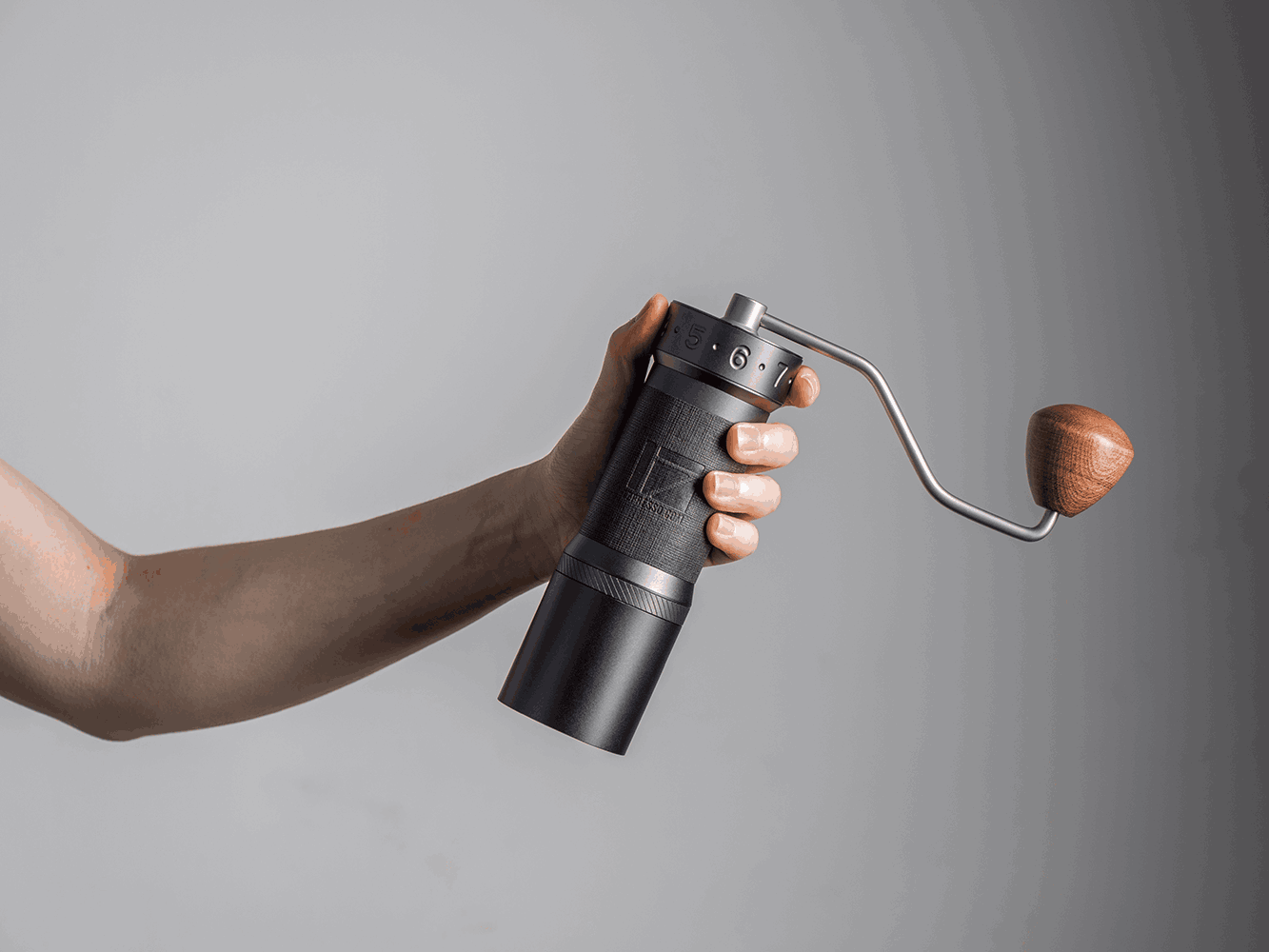A Beginner's Guide to Using a Coffee Grinder
Posted on April 08 2023,
I. Introduction
For many coffee lovers, there's nothing quite like a freshly ground cup of coffee to start the day. However, in order to achieve that perfect brew, it's important to know how to use a coffee grinder properly. In this article, we'll cover the basics of using a coffee grinder, from the different types of grinders to tips for achieving the perfect grind.II. Types of Coffee Grinders
There are two main types of coffee grinders: conical burr grinders and flat burr grinders. Conical burr grinders are generally considered to be the superior option, as they produce a more even grind and are more consistent. Flat burr grinders, on the other hand, are more affordable and easier to clean. We will discuss the pros and cons of each type in more detail.
Coffee grinders come in various types, but the two most common types are conical burr grinders and flat burr grinders.
Conical burr grinders feature a cone-shaped burr that spins against another burr with jagged edges, crushing the coffee beans between them. This type of grinder is generally considered to be the superior option, as it produces a more even grind and is more consistent. If you're looking for a high-quality conical burr grinder, the 1Zpresso J-Max Hand Grinder is one of the best manual espresso coffee grinder. It's made of durable stainless steel and features a 48mm conical burr that produces consistent, high-quality grinds. You can check it out at Rohi Coffee's collection of 1Zpresso grinders.
Flat burr grinders, on the other hand, have two flat, parallel burrs that grind the coffee beans between them. This type of grinder is typically more expensive than blade grinders, but they are still a popular choice due to their consistent results and ease of use. If you're looking for a high-quality flat burr grinder, the Eureka Oro Mignon Single Dose Grinder is a great option. It features 65mm conical burrs with its patented Extremely Low Retention (ELR), you can expect a consistent grind each time, which in turn will result in a tasty cup of coffee every time. You can find the Eureka Oro Mignon Single Dose Grinder and other coffee gear at Rohi Coffee's collection of coffee gear.
Blade grinders are another type of coffee grinder, but they are generally not recommended for coffee enthusiasts as they produce an uneven grind and can create too much heat, which can affect the flavor of the coffee.
III. Preparing Your Coffee Grinder
Before using your coffee grinder, it's important to prepare it properly. This includes cleaning the grinder thoroughly to remove any debris or residue from previous uses. To ensure your grinder's longevity, we suggest the following tips:
- Read the instructions that come with your grinder. Each grinder is different, so it's important to familiarize yourself with the specific features and functions of your model.
-
Assemble the grinder. Make sure all the parts of your grinder are properly assembled before use. Double-check that the hopper is secured in place and the collection bin is empty.
-
Choose the appropriate grind settings. Depending on your grinder model, you may need to adjust the grind settings before use. Consult the instructions that came with your grinder or look up guides online to find the appropriate settings for your brewing method.
-
Preheat the grinder. Preheat your grinder by running it for a few seconds without any coffee beans. This helps to remove any dust or debris from the grinder and ensures that the coffee beans are ground at a consistent temperature.
-
Clean your grinder. Regular cleaning is essential to keep your coffee grinder in good condition and prevent any build-up of coffee oils and residue. Check out our guide on how to clean your coffee grinder properly.
-
Store your grinder properly. When not in use, store your grinder in a cool, dry place. Avoid exposing it to moisture or extreme temperatures, as this can damage the grinder's components.
IV. Grinding Your Coffee Beans
The process of grinding your coffee beans is where the magic happens. We will discuss how to measure your coffee beans before grinding, and how to adjust the grinder settings for different brewing methods.
Once you have your coffee grinder and coffee beans ready, it's time to start grinding. Here are some tips to help you get the most out of your coffee grinder:
-
Properly measure your coffee beans before grinding. Use a kitchen scale to measure out the amount of coffee beans you need for your brewing method. As a general rule, a good starting point is to use a coffee-to-water ratio of 1:15 to 1:18, which means using 1 gram of coffee per 15 to 18 milliliters of water. However, you can adjust this ratio based on your personal taste preferences.
-
Adjust the grinder settings for different brewing methods. The grind size you use will depend on the brewing method you plan to use. For example, a coarse grind is ideal for French press, while a fine grind is needed for espresso. Consult the instructions that come with your grinder or look up online guides to find the appropriate grind setting for your preferred brewing method.
-
Achieve the desired grind consistency. Different brewing methods require different grind consistencies. For example, a drip coffee maker requires a medium grind, while a pour-over requires a medium-fine grind. Experiment with different grind settings to find the perfect balance for your preferred brewing method.
-
Clean your coffee grinder regularly. Over time, coffee oils and residue can build up in your grinder, affecting the taste of your coffee. Be sure to clean your grinder regularly to keep it in top condition. Check out our guide on how to clean your coffee grinder properly.
V. After Grinding Your Coffee
After grinding your coffee beans, it's important to handle the coffee grounds properly to ensure that they retain their flavor and aroma. Here are some tips to follow:
-
Remove the coffee grounds from the grinder. Once you've finished grinding your coffee beans, remove the collection bin or portafilter from the grinder and transfer the coffee grounds to your brewing device.
- Use your coffee grounds promptly. For specialty coffee, it's best to only grind what you need for immediate use. This will help preserve the freshness and aroma of the coffee. If you do have extra coffee grounds, store them in an airtight container in a cool, dark place and use them within a day or two to ensure maximum flavor and freshness. Avoid storing your coffee in a location that is exposed to light or heat, as this can also affect the flavor and aroma.
-
Avoid common mistakes. There are a few common mistakes that coffee lovers make when handling coffee grounds. For example, some people leave their coffee grounds in the grinder hopper or collection bin, which can cause them to go stale quickly. Others use the wrong amount of coffee grounds for their brewing method, which can result in a weak or bitter cup of coffee.
VI. Conclusion
In conclusion, using a coffee grinder is an essential part of the brewing process for any coffee lover. By following these tips and guidelines, you can achieve the perfect grind and brew a delicious cup of coffee every time. Don't forget to check out the selection of high-quality coffee grinders and gear at Rohi Coffee to enhance your brewing experience.



0 comments